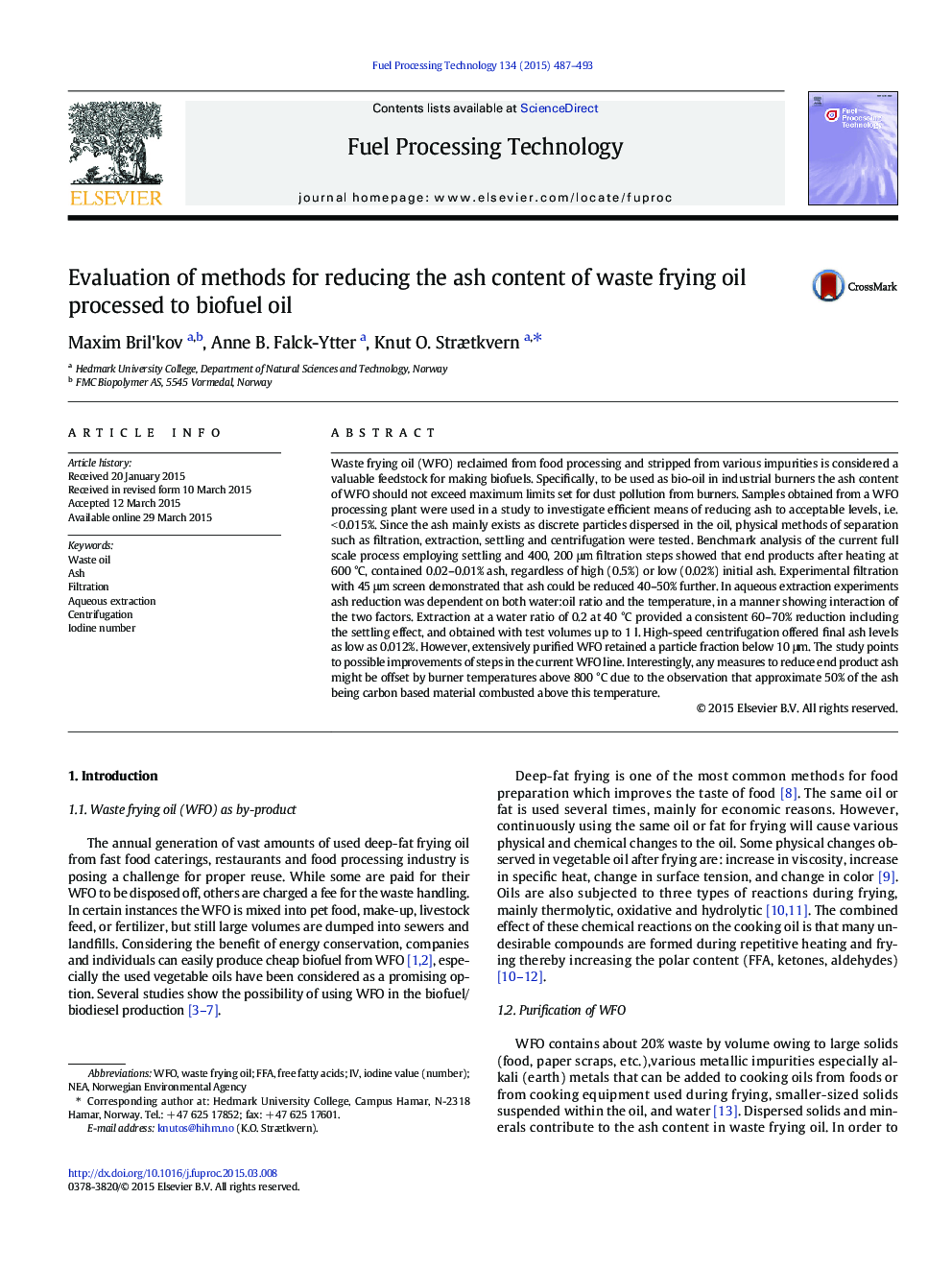| Article ID | Journal | Published Year | Pages | File Type |
|---|---|---|---|---|
| 6657113 | Fuel Processing Technology | 2015 | 7 Pages |
Abstract
Waste frying oil (WFO) reclaimed from food processing and stripped from various impurities is considered a valuable feedstock for making biofuels. Specifically, to be used as bio-oil in industrial burners the ash content of WFO should not exceed maximum limits set for dust pollution from burners. Samples obtained from a WFO processing plant were used in a study to investigate efficient means of reducing ash to acceptable levels, i.e. < 0.015%. Since the ash mainly exists as discrete particles dispersed in the oil, physical methods of separation such as filtration, extraction, settling and centrifugation were tested. Benchmark analysis of the current full scale process employing settling and 400, 200 μm filtration steps showed that end products after heating at 600 °C, contained 0.02-0.01% ash, regardless of high (0.5%) or low (0.02%) initial ash. Experimental filtration with 45 μm screen demonstrated that ash could be reduced 40-50% further. In aqueous extraction experiments ash reduction was dependent on both water:oil ratio and the temperature, in a manner showing interaction of the two factors. Extraction at a water ratio of 0.2 at 40 °C provided a consistent 60-70% reduction including the settling effect, and obtained with test volumes up to 1 l. High-speed centrifugation offered final ash levels as low as 0.012%. However, extensively purified WFO retained a particle fraction below 10 μm. The study points to possible improvements of steps in the current WFO line. Interestingly, any measures to reduce end product ash might be offset by burner temperatures above 800 °C due to the observation that approximate 50% of the ash being carbon based material combusted above this temperature.
Keywords
Related Topics
Physical Sciences and Engineering
Chemical Engineering
Chemical Engineering (General)
Authors
Maxim Bril'kov, Anne B. Falck-Ytter, Knut O. Strætkvern,
